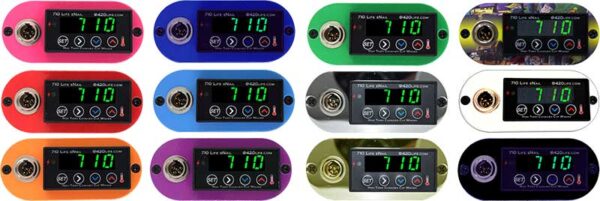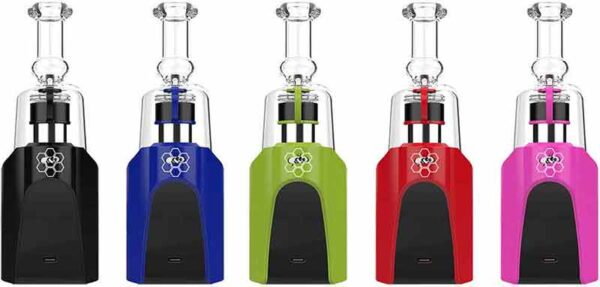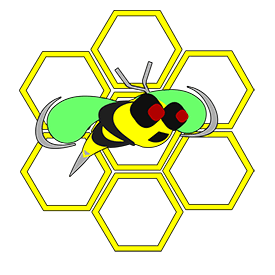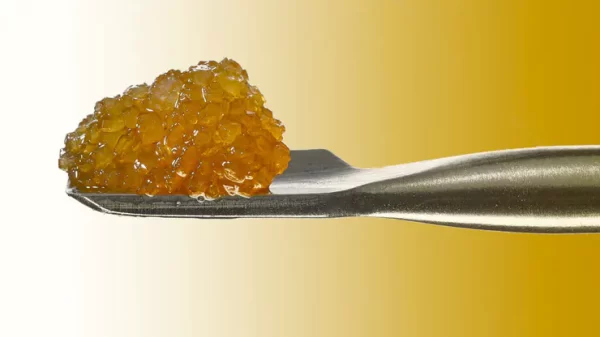- Your cart is empty
- Continue Shopping
What is dabbing? How to Dab
What is dabbing? How to Dab
The world of dabbing can be confusing to the uninitiated. It might seem like insider baseball with all its terms and abbreviations: What’s BHO? Are live resin and live rosin the same? What do eNails have to do with dabbing? And what does HTFSE mean? It’s enough to make your head spin, and you haven’t even dabbed yet. But fear not, our guide to dabbing will go over what dabbing is, how to dab, all the different types of dabs and how they’re made, and more.
What’s the difference between concentrates, extracts, and dabs?
The extraction process begins with trichomes, the resinous glands on the cannabis plant which contain cannabinoids, such as THC and CBD, and terpenes—basically, the compounds that make you feel high, and the flavor compounds. There are several extraction methods (more below) which separate trichomes from cannabis plant material to create a cannabis extract—these can have a texture and consistency like oil, sap, wax, butter, taffy, sauce, and much more. These extractions are concentrated forms of cannabis, containing only the resin from trichomes and no plant material, and are also called cannabis concentrates. The terms extract and concentrate are interchangeable. Most concentrates or extracts are consumed through the process of dabbing, which we’ll get into more below as well. Concentrates or extracts consumed through dabbing can also be called dabs. Some concentrates or extracts are not dabbed, such as kief, RSO, tinctures—which are usually alcohol extractions—and others, so these are not dabs, but they are concentrates or extracts because they remove trichomes from plant material into a concentrated form of cannabis. This guide will focus on dabs and dabbing.
What is dabbing?
Dabs are concentrated forms of cannabis that come in a variety of textures. They are consumed in a dab rig, e-rig—”electronic rig”—or dab pen. The process of dabbing is extremely hot and flash vaporizes dabs in the range of 400-600°F, whereas combusting or smoking flower happens at around 350°F. A typical dab rig looks similar to a bong—it has a mouthpiece connected to a chamber with water, except instead of a bowl for flower, a rig has a eNail for dabs. Because of the high temperatures needed to dab, the nail is usually heated with a torch and allowed to cool to the right temperature before dropping in a dab. Dabs are named for their texture, and their texture is indicative of the process used to create them. There are numerous extraction methods to create a myriad of different dabs. All dabs are sticky and can be messy to work with, and can be a variety of colors: yellow, amber, brown, and even white.
Benefits of dabbing
Dabbing isn’t for everyone, especially if you’re new to cannabis, but when done safely with clean, tested products, patients and consumers find several advantages to it.
- Potency – People mainly dab because dabs are potent. Some consumers have a high tolerance for weed or just want a potent cannabis experience, while others enjoy the ritual of it.
- Flavor – Dabs are flavorful and said to be “terpy,” or full of terpenes. A great concentrate will carry the flavor and aroma of the original plant through the extraction process and into the final product when you dab.
- Cleaner – Extracts that have been properly made can also be cleaner, purer, and easier on the lungs—when smoking cannabis, burned plant matter produces resin and hot smoke, but extracts eliminate most of these unwanted materials while still delivering essential cannabinoids, terpenes, and other compounds.
- Quick onset of effects – Patients dealing with severe or chronic pain, or extreme nausea report that dabbing cannabis extracts can be one of the best ways to get immediate and effective relief.
- Dabbing safety – Dabbing is different from smoking, vaping, or taking edibles, and has its own concerns. It’s important to note that the long-term effects of dabbing cannabis concentrates are not fully known because they haven’t been researched extensively. Here are some things to be aware of when dabbing.
- Can you overdose on dabs? – The good news is, no one has ever overdosed on cannabis and it is impossible to do so. However, dabs are very potent and can catch you off guard if you’re not expecting it.
Cannabis flower typically has a potency between 15-25% THC, but concentrates are usually in the 60-90% THC range, which means it doesn’t take much to get profoundly high. A sliver of dab, just one hit, can equal an entire joint or two and will hit you all at once. Exceeding your personal THC limit may lead to uncomfortable and overwhelmingly intense effects. If you’ve never dabbed before, we recommend you do it in a safe, comfortable place, and it’s also a good idea to have a friend or someone show you how to do it; it’s a bit more complicated than simply lighting up a bowl. It’s always a good idea to start with a small dab and slowly increase the amount if comfortable to ensure a positive and comfortable experience.
Solvents
It’s important to always get cannabis products that have been lab-tested and approved in a legal market, and this is especially crucial with dabs, as many are made with solvents. Solvents must be purged out of the final product, and legal markets have strict regulations on the amounts of residual solvents that can be in products before they can be sold. Dabs that have not been tested and approved could contain trace amounts of solvents and could damage your lungs and body.
Temperatures
Portable eNails and e-nails get to the perfect heated temp for you, sometimes up to 600°F + , so touching one, even accidentally, will not be pleasant, But the ability to have a precision based temerature control allowing eNails to be dialed in to the PERFECT TEMP. Take caution when working with one, and always wait for all pieces to cool down before you even think of touching them. And if you’re concerned about using a torch, try an e-nail or portable e-rig—they still get extremely hot, but they cut out the need for a torch and provide steady, consistent heat.
How are dabs made?
There are numerous ways to create a cannabis extraction, but all extraction processes remove trichomes, which contain valuable cannabinoids and terpenes, from cannabis plant material, into a concentrated form.
There are a few factors that contribute to a concentrate’s texture, potency, and flavor:
- Type and quality of cannabis source material used for extraction—trim, buds, whole plants, hash, etc.
- Method of extraction—either solvent or solventless
- Post-extraction refining techniques—dewaxing, winterization, whipping, etc.
Source material
Most dabs are made with either trim or flower as the starting material. When cannabis plants are harvested, sugar leaves and other plant material is clipped away from buds—this is trim, and a batch of concentrate made with it is called a trim run. When only flower is used to create a batch of concentrates, it’s called a nug run. Nug runs are higher in quality than trim runs because buds have more trichomes.
Cannabis plants can also be cut down and immediately frozen at harvest, and the whole plant put in an extractor that maintains freezing temperatures throughout the process. Using frozen plants gives an extract a “live” label, such as live resin and live rosin. Using frozen plants is cheaper and less labor-intensive for the grower because they don’t have to trim, dry, and cure plants.
Solvent extractions
Dabs are most commonly made by commercial extractors creating in bulk. To do so, cannabis plant material and a solvent, such as butane, propane, etc., is placed in a contained, closed-loop system for several hours, creating a concentrate slurry, in which the solvent strips trichomes from the plant material. The solvent is then purged from the slurry and the cannabis extraction pulled from the machine. Solvent extractions will often be further refined. Because butane is primarily used in solvent extractions, these cannabis products are commonly known as BHO, or butane hash oil. Butane, propane, and other common solvents are also called hydrocarbons, so solvent extraction can also be called hydrocarbon extraction. Common solvent extractions include: shatter, wax, live resin, budder, badder, crumble, sugar, taffy, and many more. They are usually cheaper and easier to make than solventless extractions but are made with chemical solvents. Decades ago, in the beginning of cannabis extraction, open extractions systems were used, but they are highly flammable, very dangerous, and should never be used anymore. All legal cannabis markets today require solvent extraction be done in a closed-loop system by trained, licensed professionals for safety.
Solventless extractions
Solventless extractions use temperature changes and physical manipulation to separate trichomes from cannabis plant material. For example: Bubble hash is created by placing cannabis plant material in ice water and agitating it, which freezes and breaks off trichomes; dry-sift hash is created by rubbing plant material through a set of screens, collecting the resin or kief, and then pressing it together; rosin is created by pressing cannabis between two heated plates to squeeze out hot oil. Some solventless extraction methods have been around for thousands of years, and all solventless methods are natural, handmade, and thought to be cleaner because they don’t use chemicals. They are usually more expensive than solvent dabs because they are more labor-intensive, and you can also make them yourself.
Post-extraction cleanup
Once a solventless extraction is created, it’s usually ready to consume. But solvent extractions are usually refined after being purged of solvents and pulled from an extraction machine. Dewaxing and winterization are refining processes that remove plant lipids, fats, and waxes from an extraction. These are removed to make concentrates less harsh and more flavorful, and to make them look clear, not cloudy. A concentrate can also be whipped, turning an oily extract into a waxy one. This agitation causes THCA to break away and crystallize and for terpenes to break away from cannabinoids. This process is done to bring out a stronger aroma and flavor in an extract. Extracts are often put in a vacuum oven to further remove residual solvents in a safe manner.
Types of dabs
Here’s a list of the many dabs on the market and what distinguishes one from another.
Solvent extractions
These are extractions made with a solvent or chemical, such as butane or propane. They are usually cheaper and easy to produce.
Shatter
Shatter is typically gold or amber in color, and is hard and breaks apart like glass. This solvent extract is poured out in sheets and usually put in a vacuum oven to purge out residual solvents. Making clear, high-quality shatter is difficult—it’s hard to keep it from buttering up and turning opaque. Shatter is potent and is one of the more common cannabis extracts on the market.
Wax
Wax is an umbrella term for many types of dabs that are soft and malleable. If shatter butters up and doesn’t stay clear, it is usually whipped and turned into a wax. Nuanced forms of wax include budder, batter, sugar, crumble, and more. Wax can be made using a variety of different techniques but is commonly made with butane. Most often dabbed, wax can also be added to bowls, joints, or blunts for added potency.
Taffy/Pull ‘n’ snap
Pull ‘n’ snap is a glossy, flat concentrate with a soft, taffy-like texture. It often looks like shatter but has a more pliable consistency. Similarly to shatter, it is commonly a result of hydrocarbon extracts that are left undisturbed during the purging process. Pull ‘n’ snap products are appreciated for being relatively easy to work with, but they’re known to become stringy and messy when exposed to warm temperatures. When stored at cooler temperatures, pull ‘n’ snap’s consistency becomes more like shatter.
Budder/Batter/Badder
This type of wax has many names, budder, batter, or badder, and has the consistency of cake batter—thick and gooey, but slightly drippy. It’s often gold or blond in color and is easy to handle. Sugar, or sugar wax, has a consistency of wet sugar that hasn’t dissolved. It’s semi-crystalline and is slightly looser and wetter than badder. Sugar was originally created by accident, as other extracts turned into sugar over time with the aid of condensation. It is now made intentionally, and is easy to handle because of its consistency.
Crumble
Crumble is a type wax that is looser and drier than other extracts. Sometimes called “honeycomb,” it breaks apart easily and is usually dark yellow in color. It is usually cheaper than other solvent extracts because it is more difficult to handle. Crumble is made in a similar manner to shatter except it usually stays in a vacuum oven for longer, drying it out more, and giving it a low risk for mold contamination. Some extractors slightly whip it before heating to encourage it to become a crumble, rather than a shatter.
Live resin
Live resin is made from cannabis plants that are frozen at harvest and kept frozen throughout the extraction process, whereas most other extracts are made with dried plant material. This process retains more terpenes and leads to more fragrant and flavorful dabs. Live resin is made with solvents and usually has a saucy consistency, making it easy to handle when dabbing and ideal for vape cartridges.
Diamonds
Diamonds are primarily made of one cannabis compound, such as THCA or CBD, and have such a high degree of purity that they form a crystalline solid, like a diamond. Because they are mainly made of one compound, they are know as isolates, as opposed to full-spectrum extracts, which are comprised of all the cannabinoids and terpenes of a whole plant. Diamonds are often dabbed with terp sauce because they contain little terpenes of their own and don’t have much flavor.
Sauce
Sauce, or terp sauce, is a goopy solution of cannabinoids and terpenes that is known for being very flavorful. It often contains some diamonds in it and can appear slightly granular. It often goes through winterization to remove fats and lipids, and is usually amber or yellow in color.
Solventless extractions
Solventless dabs are not made with chemicals, but use physical manipulation and temperature changes. They are usually more labor-intensive to make and therefore more expensive, and are considered cleaner.
Rosin
Rosin is a solventless extract made using heat and pressure. Cannabis plant material is placed in a press with two heated plates to extract a hot oil, which is then allowed to cool. Live rosin is made in the same way but with frozen cannabis plants, making it more flavorful. Rosin is commonly dabbed but can also come in vape cartridges. It’s considered to be one of the purest types of concentrates because it’s not made with chemicals.
Hash (Dry-sift)
Hash, or hashish, is cannabis resin or kief that is packed or pressed together. Trichomes can be frozen off with dry ice and pressed together, or resin simply collected and rolled into a ball, as with charas. This solventless concentrate is brown in color and more potent than flower. Hash can be dabbed but is often smoked. It can also be vaporized or prepared in food or drink.
Bubble hash (aka ice water hash, ice hash)
Not to be confused with dry-sift hash, bubble hash is a solventless extract made with ice water. Cannabis plant material is placed in ice water and agitated, which freezes and then breaks off trichomes. The resulting liquid is then filtered through a series of mesh bags to remove plant matter. Bubble hash is rated on its quality, or “meltability”—full melt or six star hash is the highest in quality and so named because it fully melts or bubbles away. It can range in color from light blond to dark brown.
How to Dab Perfectly
buy either one! Portable eNails and e-nails



